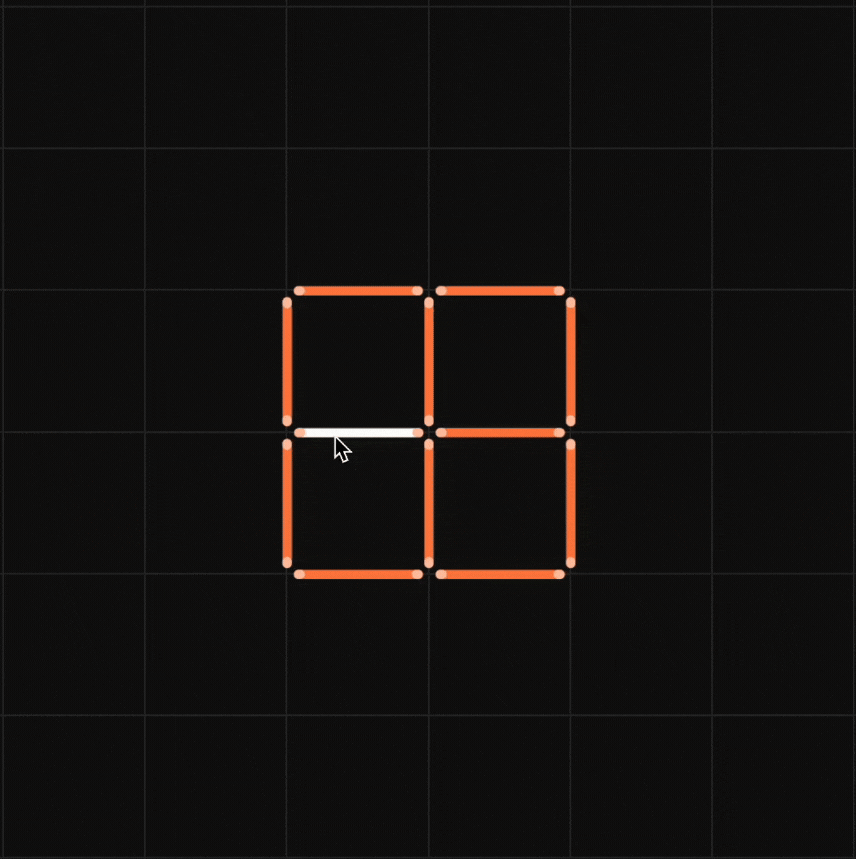

The following fractions represent just three different numbers. Separate them into three groups of equivalent fractions, by changing each one to its simplest form.
(a) 2/12 (b) 3/15 (c) 8/50 (d) 16/100 (e) 10/60 (f) 15/75 (g)12/60 (h) 16/96 (i)12/75 (j) 12/72 (k) 3/18 (l) 4/25
Solution:
We use the concepts of fractions, reduce fractions, and equivalent fractions to separate the given fractions into groups of equivalent fractions.
(a) 2/12
Reducing 2/12 to its simplest form by dividing both the numerator and the denominator by 2, we get 2/12 = 1/6.
(b) 3/15
Reducing 3/15 to its simplest form by dividing both the numerator and the denominator by 3, we get 3/15 = 1/5.
(c) 8/50
Reducing 8/50 to its simplest form by dividing both the numerator and the denominator by 2, we get 8/50 = 4/25.
(d) 16/100
Reducing 16/100 to its simplest form by dividing both the numerator and the denominator by 4, we get 16/100 = 4/25.
(e) 10/60
Reducing 10/60 to its simplest form by dividing both the numerator and the denominator by 10, we get 10/60 = 1/6.
(f) 15/75
Reducing 15/75 to its simplest form by dividing both the numerator and the denominator by 15, we get 15/75 = 1/5.
(g) 12/60
Reducing 12/60 to its simplest form by dividing both the numerator and the denominator by 12, we get 12/60 = 1/5.
(h) 16/96
Reducing 16/96 to its simplest form by dividing both the numerator and the denominator by 16, we get 16/96 = 1/6.
(i) 12/75
Reducing 12/75 to its simplest form by dividing both the numerator and the denominator by 3, we get 12/75 = 4/25.
(j) 12/72
Reducing 12/72 to its simplest form by dividing both the numerator and the denominator by 12, we get 12/72 = 1/6.
(k) 3/18
Reducing 3/18 to its simplest form by dividing both the numerator and the denominator by 3, we get 3/18 = 1/6.
(l) 4/25
We cannot reduce 4/25 since it is already in its simplest form.
Now grouping the above fractions into equivalent fractions, we have (a) 2/12, (e) 10/60 (h) 16/96 (j) 12/72 and (k) 3/18 in the group of 1/6, (b) 3/15, (f) 15/75 and (g) 12/60 in the group of 1/5 and (c) 8/50, (d) 16/100, (I) 12/75 and (l) 4/25 in the group of 4/25.
NCERT Solutions for Class 6 Maths Chapter 7 Exercise 7.4 Question 6
The following fractions represent just three different numbers. Separate them into three groups of equivalent fractions, by changing each one to its simplest form. (a) 2/12 (b) 3/15 (c) 8/50 (d) 16/100 (e) 10/60 (f) 15/75 (g) 12/60 (h) 16/96 (i) 12/75 (j) 12/72 (k) 3/18 (l) 4/25
Summary:
After grouping the above fractions into equivalent fractions, we have (a) 2/12, (e) 10/60, (h) 16/96, (j) 12/72, and (k) 3/18 in the group of 1/6, (b) 3/15, (f) 15/75 and (g) 12/60 in the group of 1/5 and (c) 8/50, (d) 16/100, (i) 12/75 and (l) 4/25 in the group of 4/25.
☛ Related Questions:
- Find Answers To The Following Write And Indicate How You Solved Them A Is 5 9 Equal To 4 5 B Is 9 16 Equal To 5 9 C Is 4 5 Equal To 16 20 D Is 1 15 Equal To 4 30
- Ila Read 25 Pages Of A Book Containing 100 Pages Lalita Read 2 5 Of The Same Book Who Reads Less
- Rafiq Exercised For 3 6 Of An Hour While Rohit Exercised For 3 4 Of An Hour Who Exercised For A Longer Time
- In Class A Of 25 Students 20 Passed With 60 Or More Marks In Another Class B Of 30 Students 24 Passed With 60 Or More Marks In Which Class A Greater Fraction Of Students Getting 60
visual curriculum